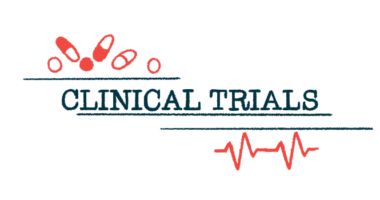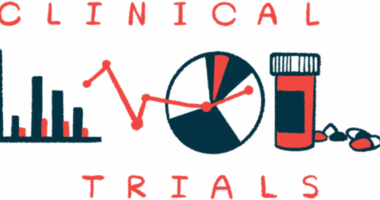Stem-cell therapy during Kasai effective, safe in biliary atresia: Trial
Combined therapy results in better liver function, less severe disease

Children with biliary atresia who received infusions of bone-marrow stem cells during a Kasai operation, a liver surgery that’s the main strategy for treating the condition, had reduced disease severity and greater improvements in liver function than patients who received only the surgery.
The combined intervention was also found to be safe, according to results of a Phase 1 trial (NCT05517317).
The results were published in the study, “Modified Kasai operation combined with autologous bone marrow mononuclear cell infusion for biliary atresia,” which appeared in BMC Surgery.
“[Bone marrow stem cell] administration combined with Kasai operation for [biliary atresia] is safe and may maintain or improve liver function in the studied patients,” the researchers wrote.
Biliary atresia is a rare liver disease affecting infants in which the ducts that carry digestive fluid bile from the liver to the small intestine are blocked or absent. Within a few weeks after birth, infants develop symptoms of jaundice (yellow discoloration of the skin and whites of the eyes) and pale stools. Long-term complications include liver scarring known as cirrhosis and organ failure.
Liver disease after Kasai
During the Kasai procedure, surgeons create a new pathway that carries bile out of the liver and into the intestines, effectively replacing the blocked or absent bile ducts.
Even with the procedure, many children with biliary atresia experience progressive cirrhosis and liver disease that ultimately leads to liver failure.
Bone marrow stem cells can develop into any type of blood cell. They are responsible for the development, maintenance, and regeneration of tissues. Infused stem cells are expected to move through the blood to damaged tissue and help with tissue repair and regeneration.
In the clinical trial, researchers compared the efficacy and safety of combined cell infusions and Kasai surgery with Kasai surgery alone in two groups of children with biliary atresia.
The first group, composed of 10 children with a mean age of 2.6 months, received stem cells through the umbilical vein during the surgery. The control group, another 10 children of similar age, underwent only the Kasai surgery.
At baseline, 80% of the stem cell-treated group had enlarged livers, while 50% of the control group had the same condition. In both groups, 40% of the children had enlarged spleens.
Each patient underwent a modified Kasai operation, with surgeons adapting the procedure to make it easier to remove scar-like tissue in the area where the bile ducts leave the liver.
In the stem cell-treated group, bone marrow cells were harvested from each patient. These patients subsequently received a 10-minute infusion of their own bone marrow stem cells via the umbilical vein.
Patients in both groups were followed for more than four years.
There were no major complications during or after surgery in the stem cell-treated group, leading researchers to conclude the combined surgery and stem cell infusion was safe. Liver function in that group was maintained or improved, as measured by multiple biochemical markers.
Relative to the control group, the stem cell-treated group had more significant decreases in bilirubin and liver enzymes, markers of liver damage and disease, and higher levels of albumin, a protein produced by the liver. Low levels of albumin indicate liver problems.
The two stem cell-treated patients who had second liver biopsies one year after surgery had less cholestasis (slowing or stalling of bile flow from the liver) and mild inflammation without worsening of cirrhosis.
Combined Kasai surgery and stem cell infusions led to greater reductions in disease severity, as demonstrated by a 3.1-point reduction in Pediatric End-Stage Liver Disease (PELD) scores during each six-month visit for patients in the stem cell-treated group.
While all patients in the stem cell-treated group survived more than four years after their combined surgery and stem cell treatment, three patients in the control group did not,
“Our results revealed that the modified Kasai operation combined with [bone marrow stem cell] infusion was more effective for [biliary atresia] than the Kasai operation alone,” the researchers wrote.
The researchers cautioned that their results were based on a small number of patients and called for further research.
“Larger randomized clinical trials with an expanded control group are necessary to better assess the efficacy of combining the Kasai operation with cell therapy for [biliary atresia],” they wrote.







